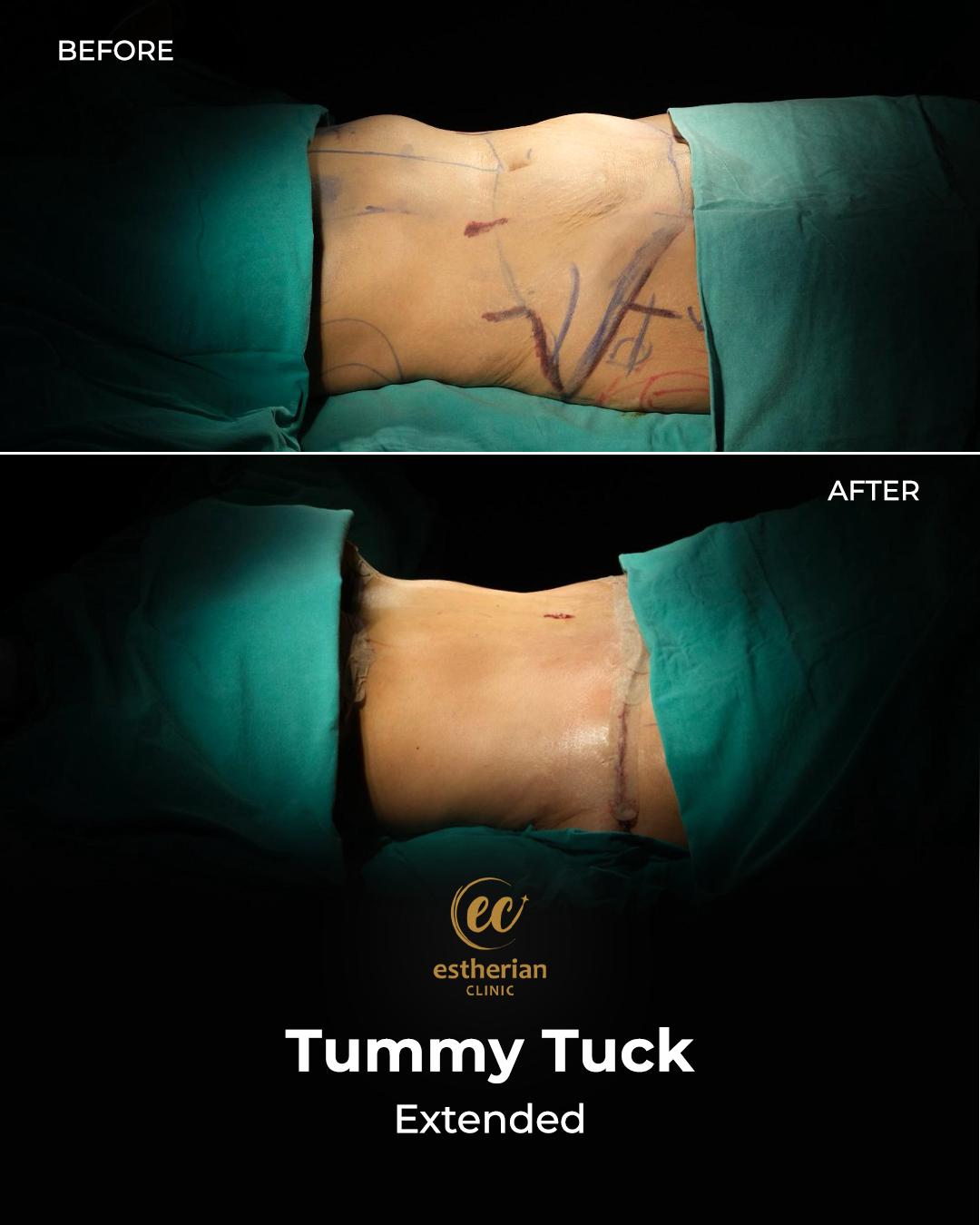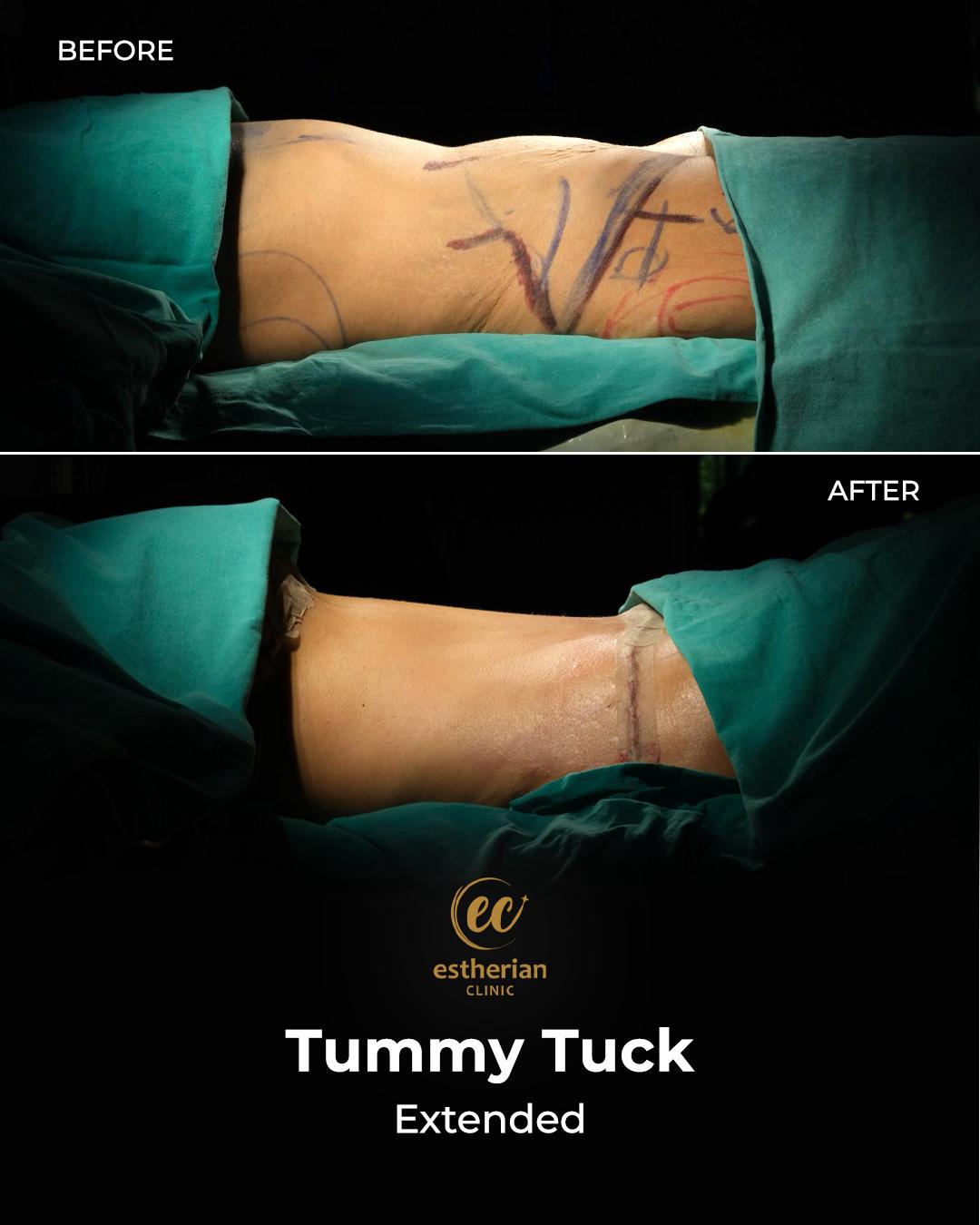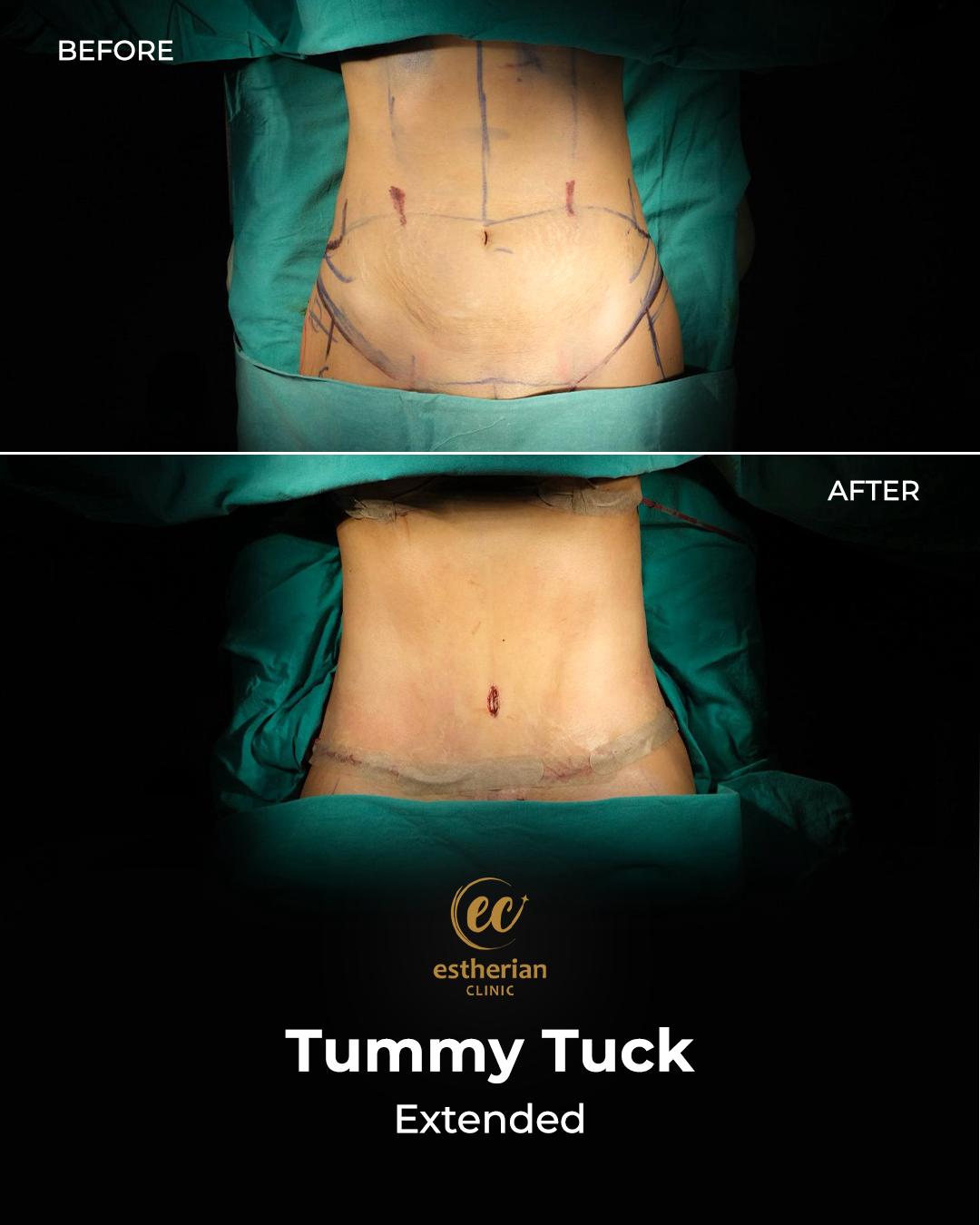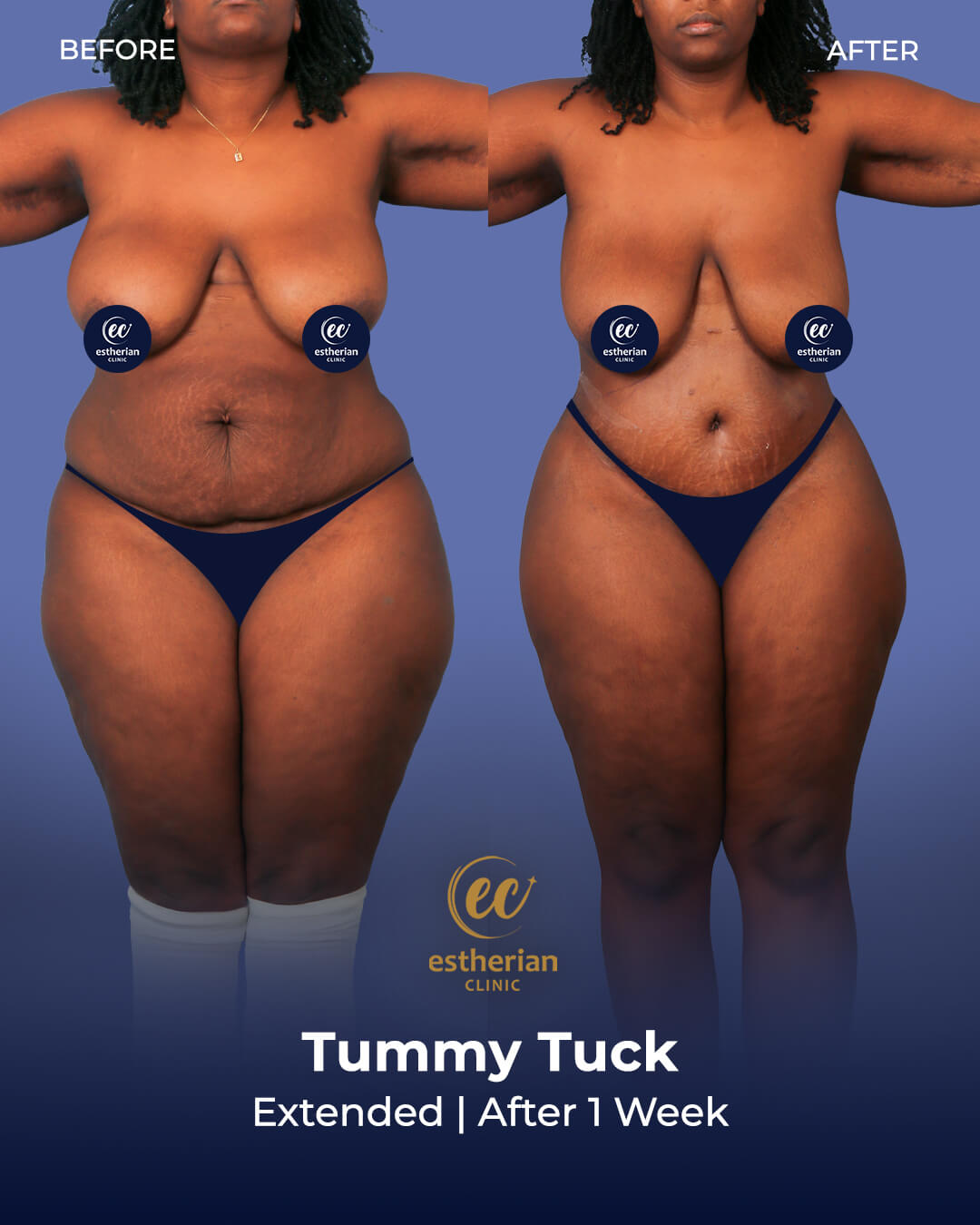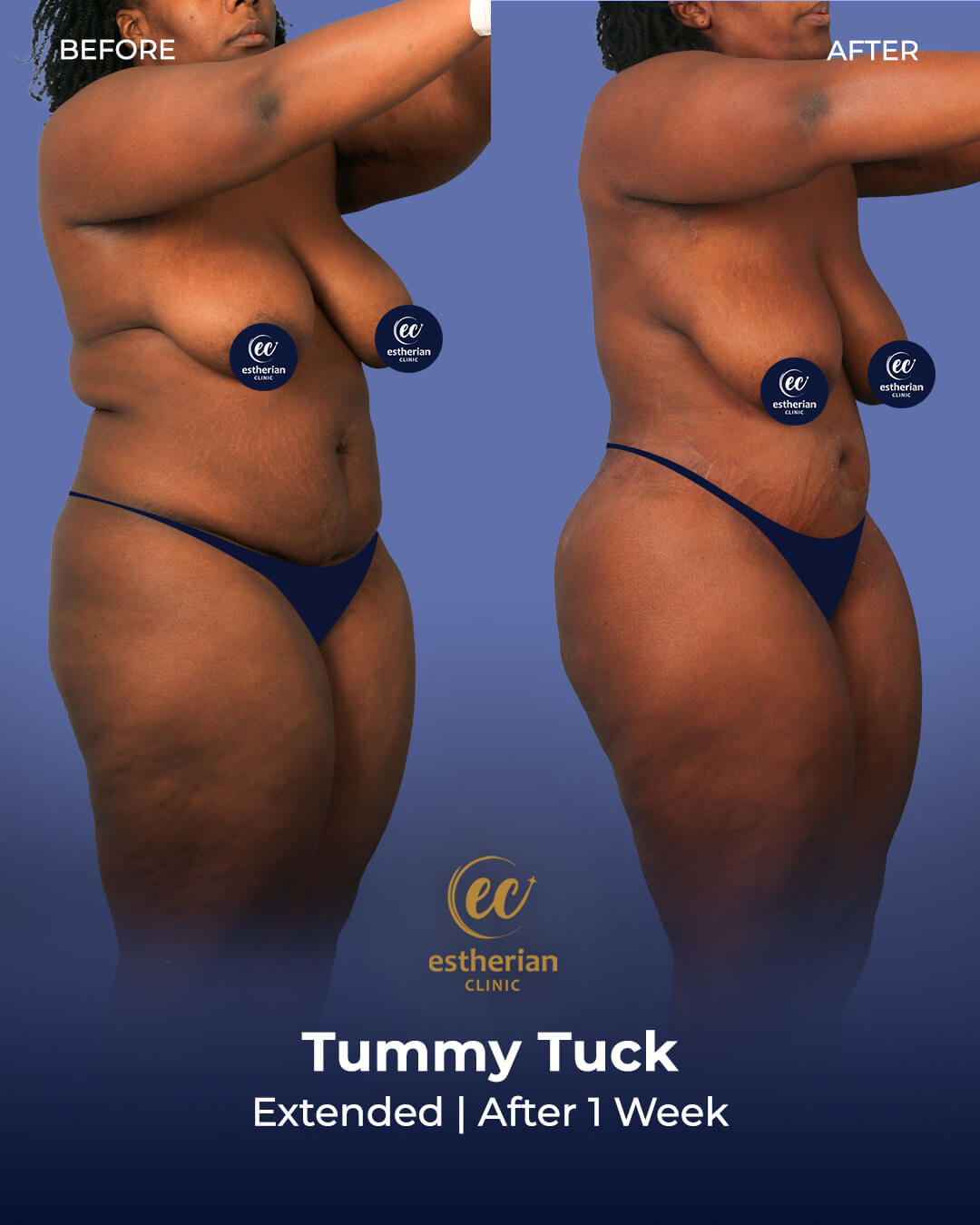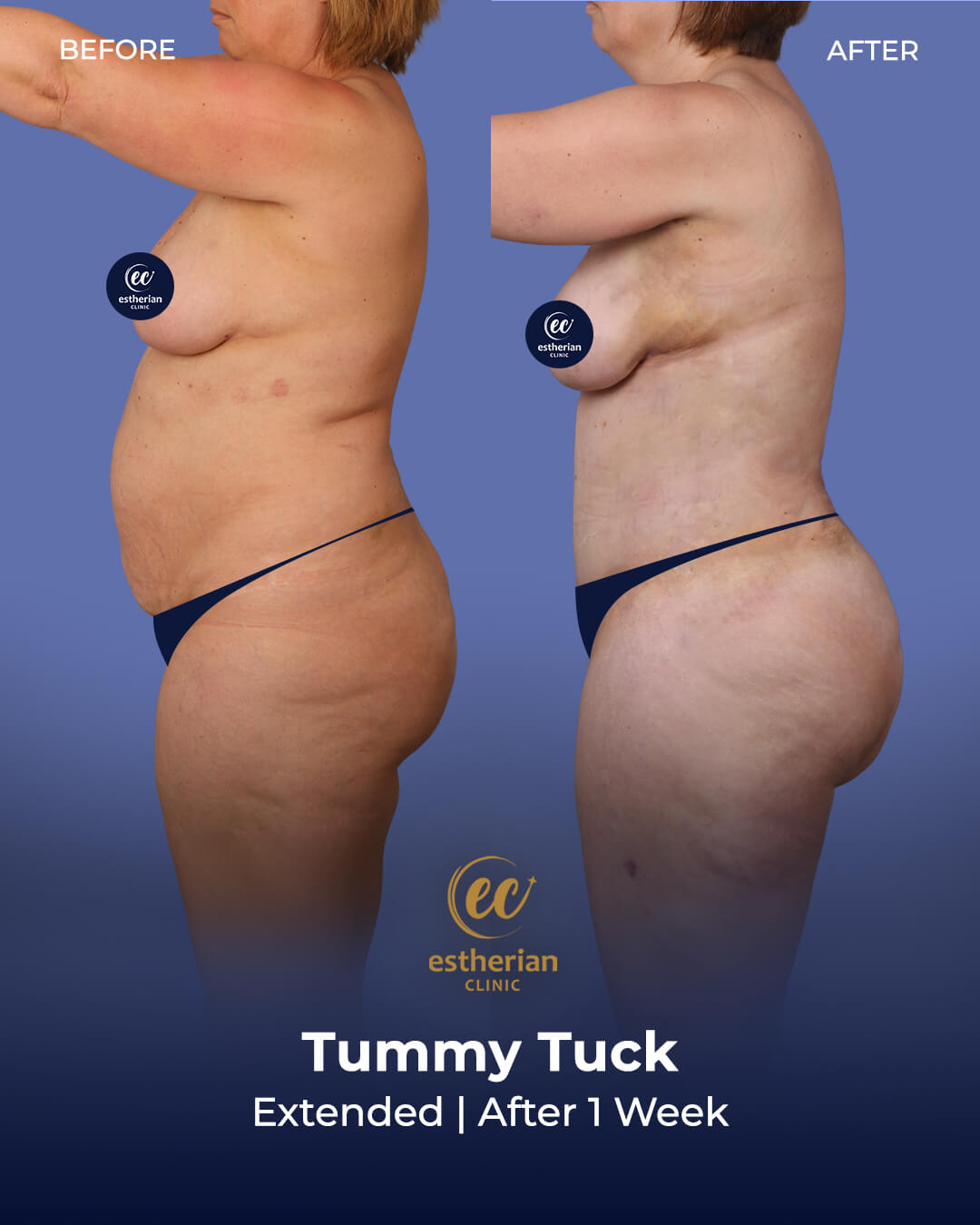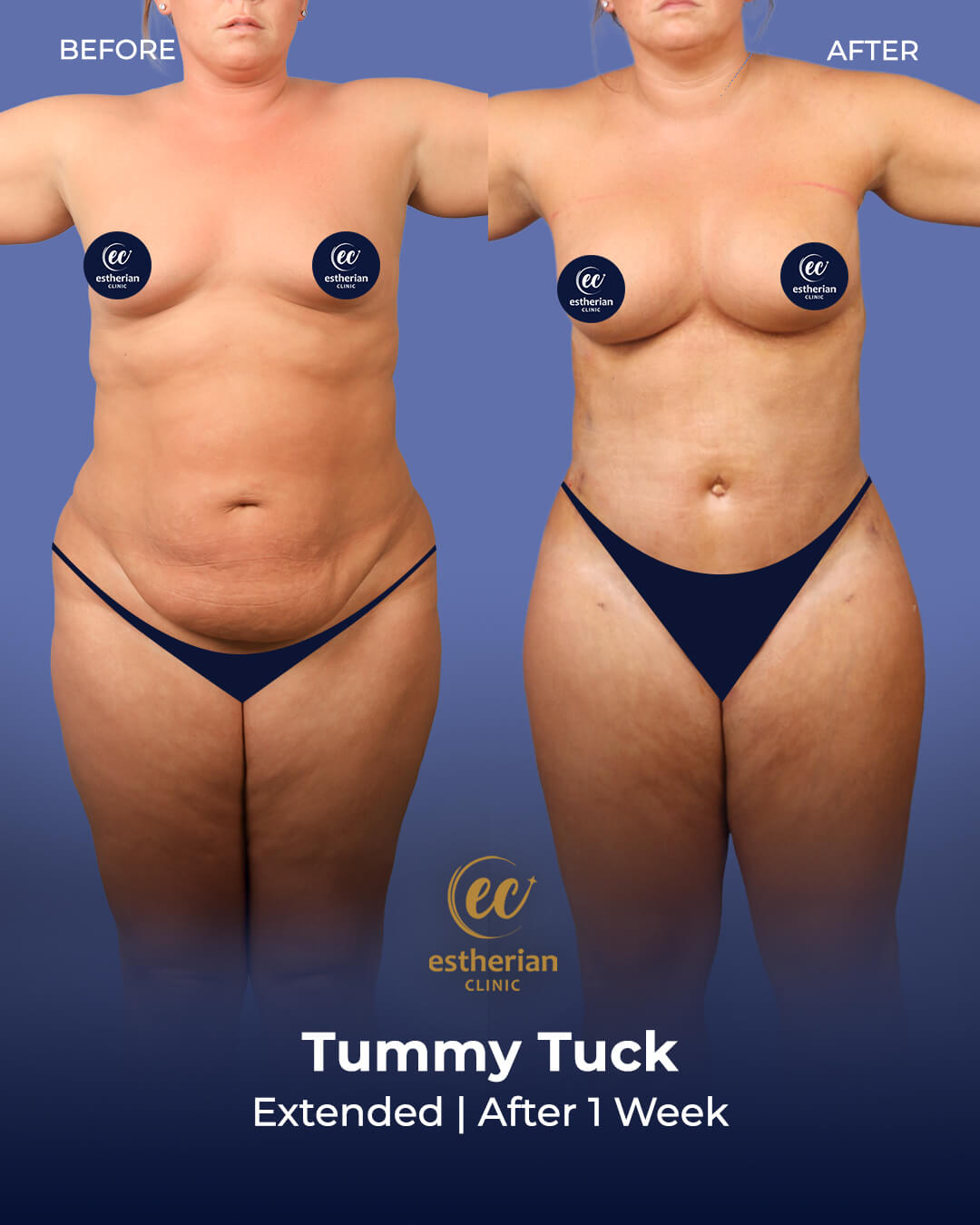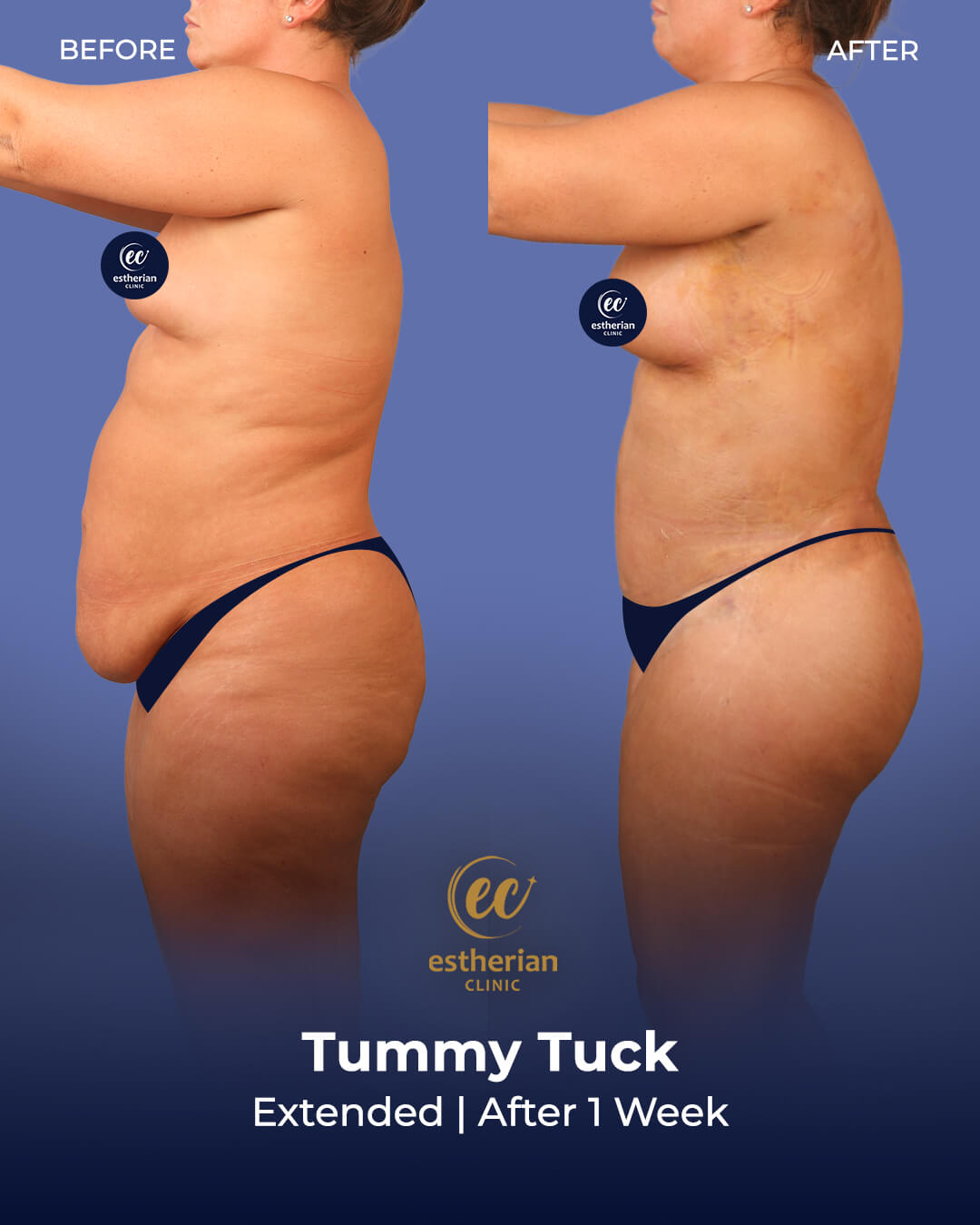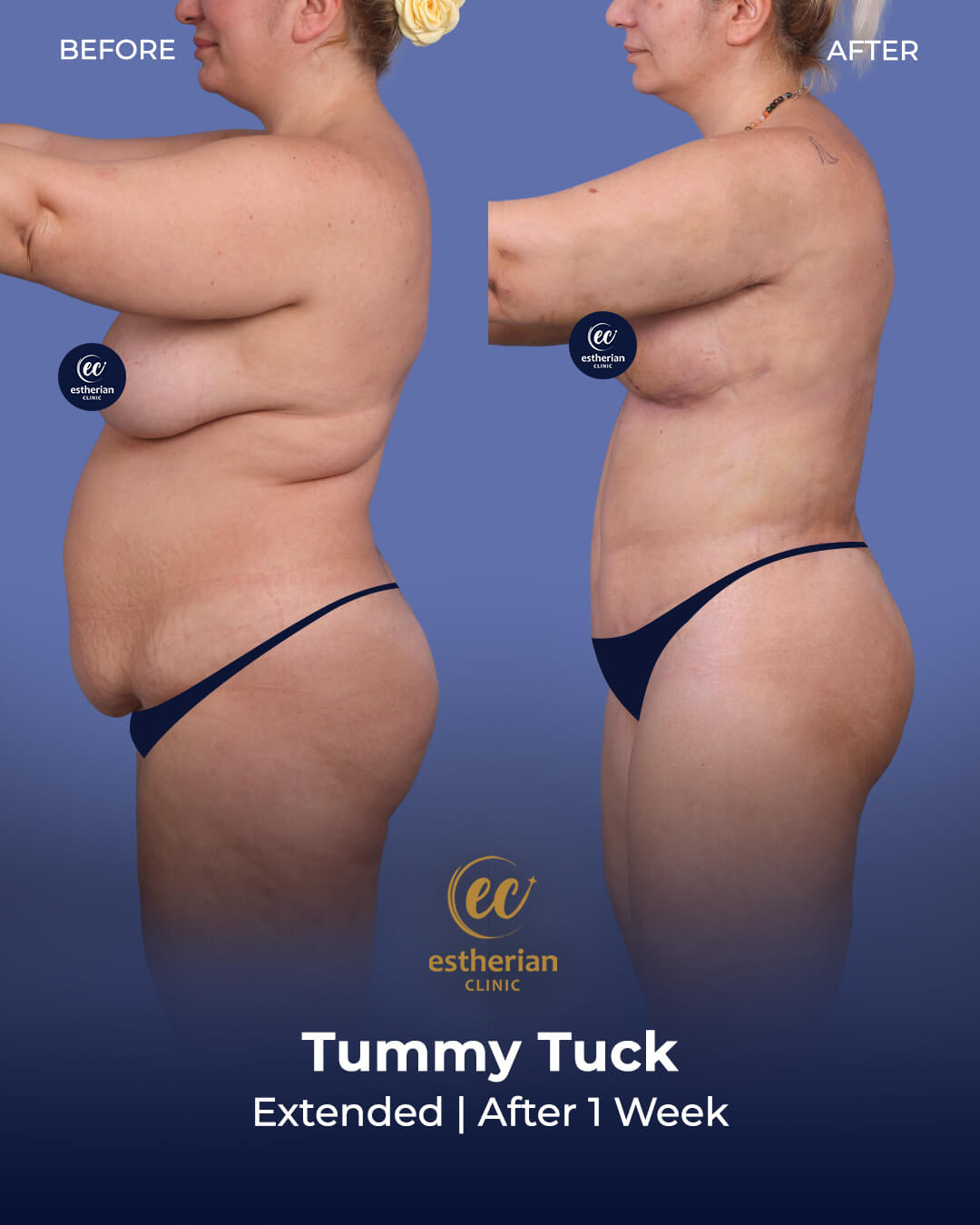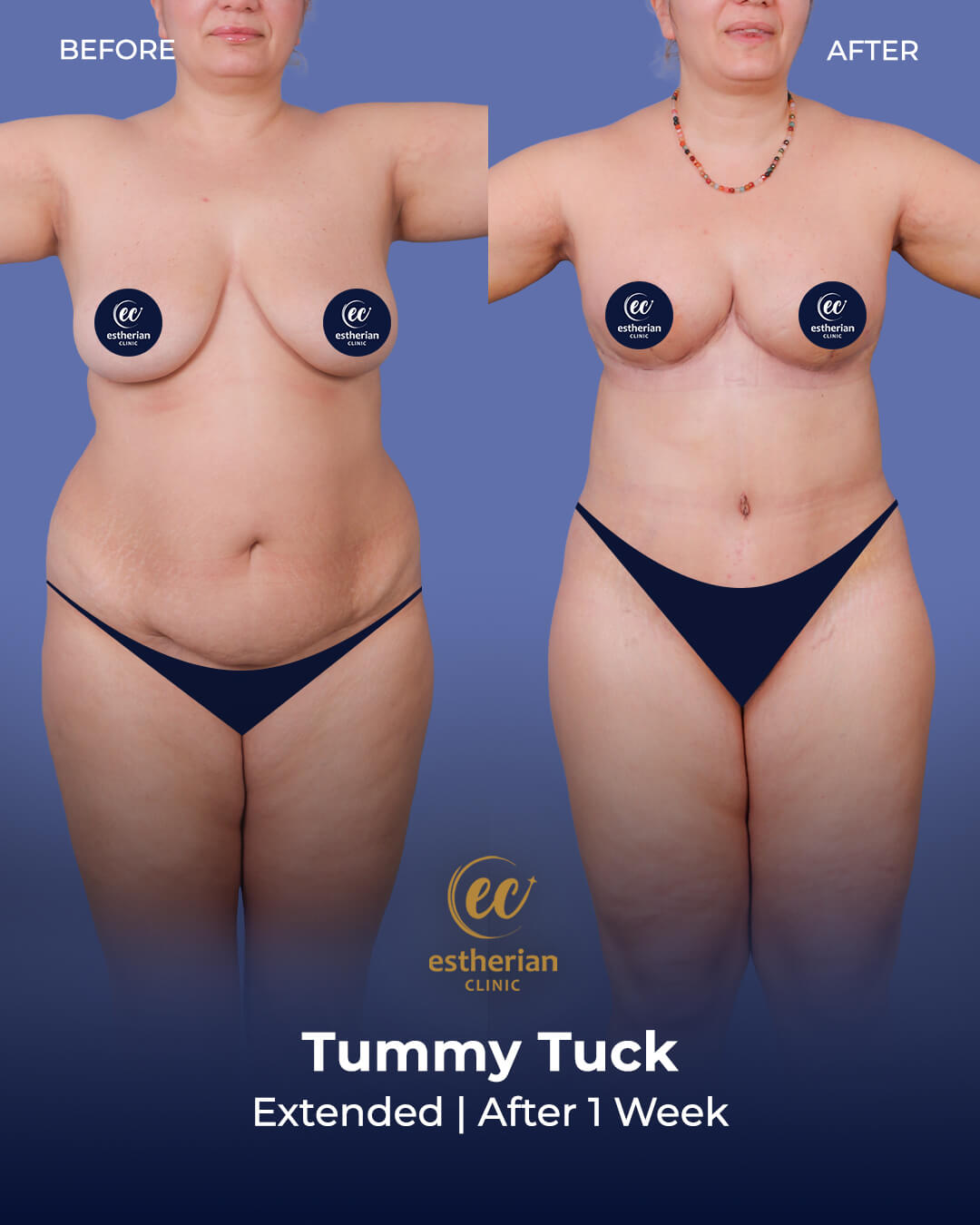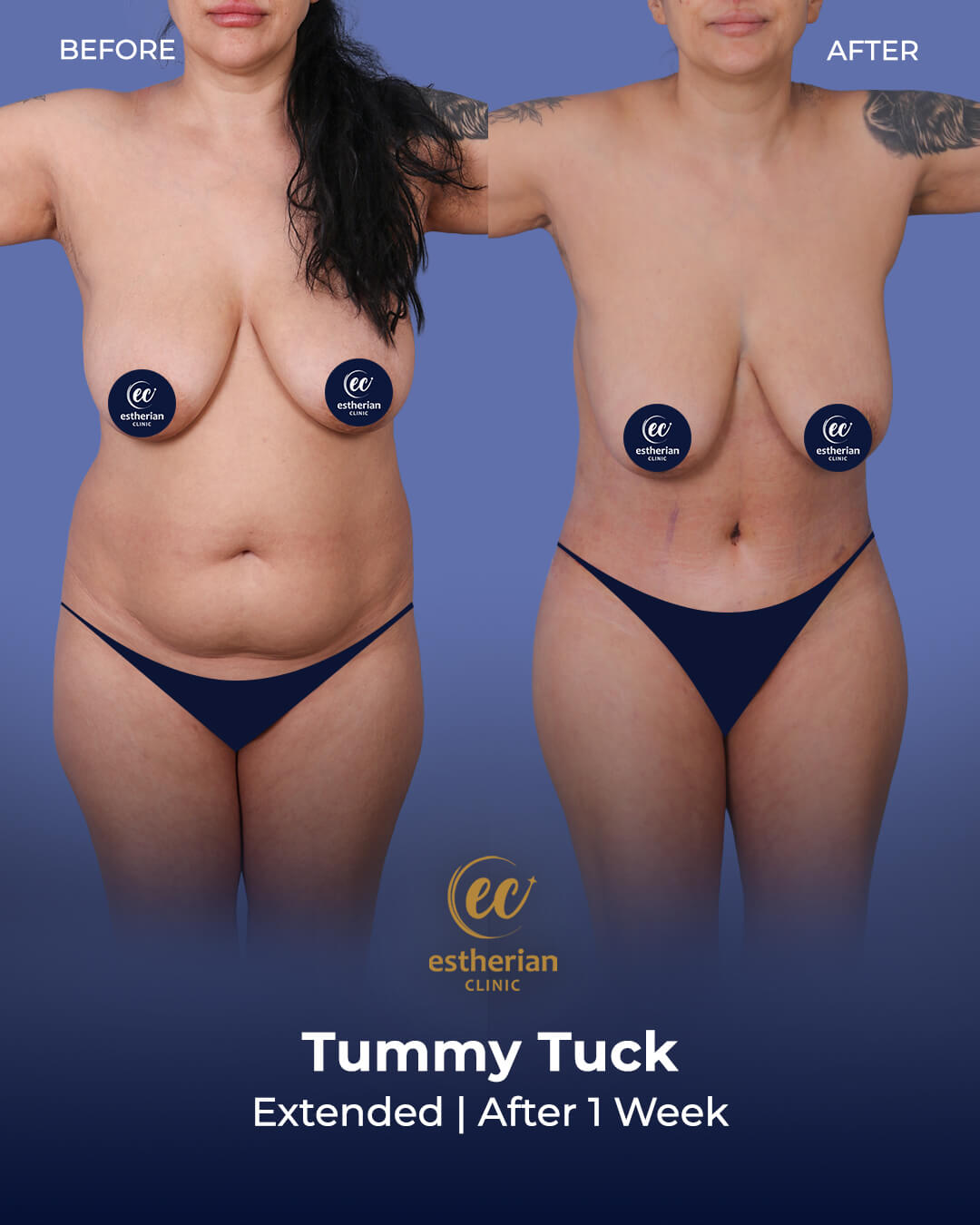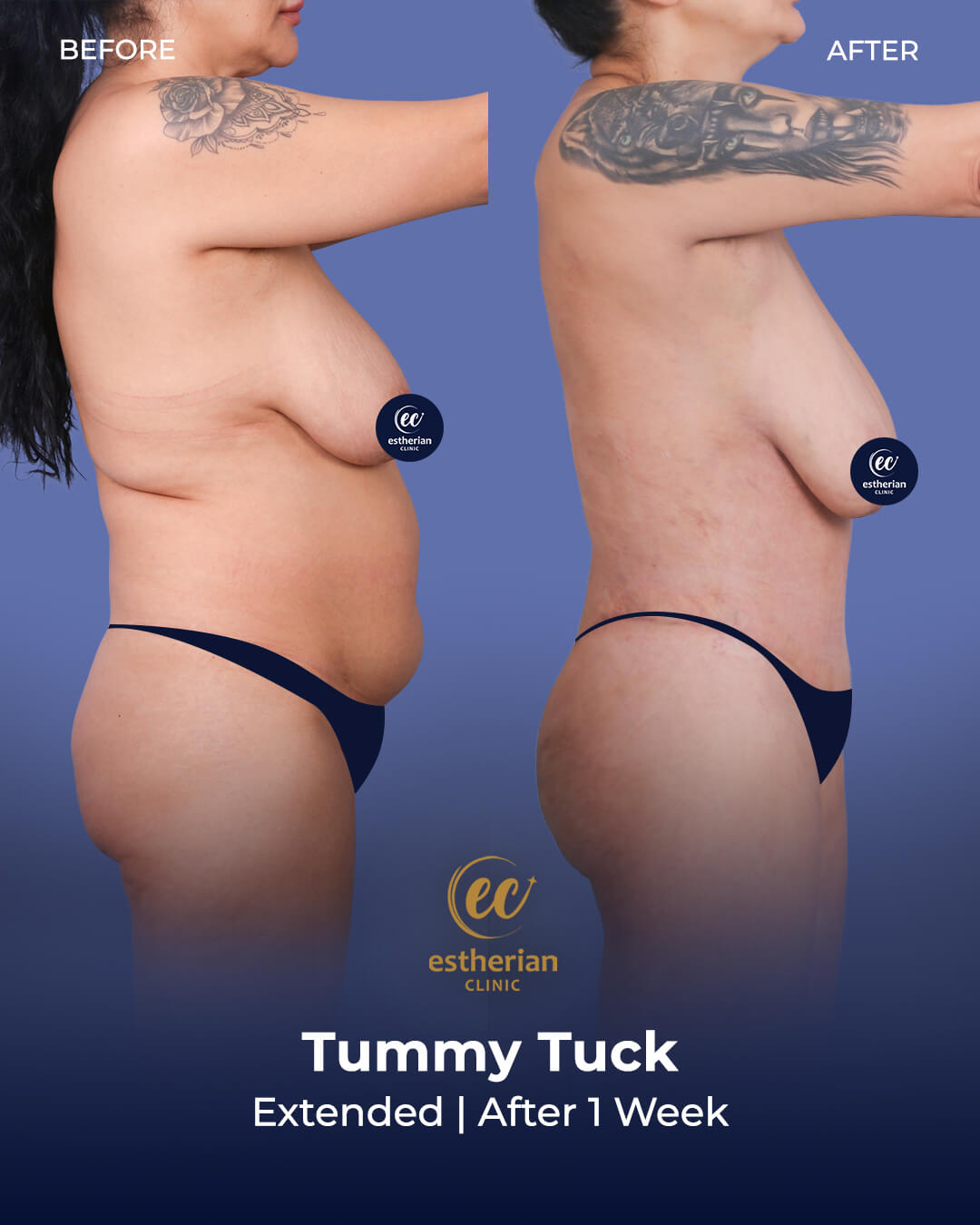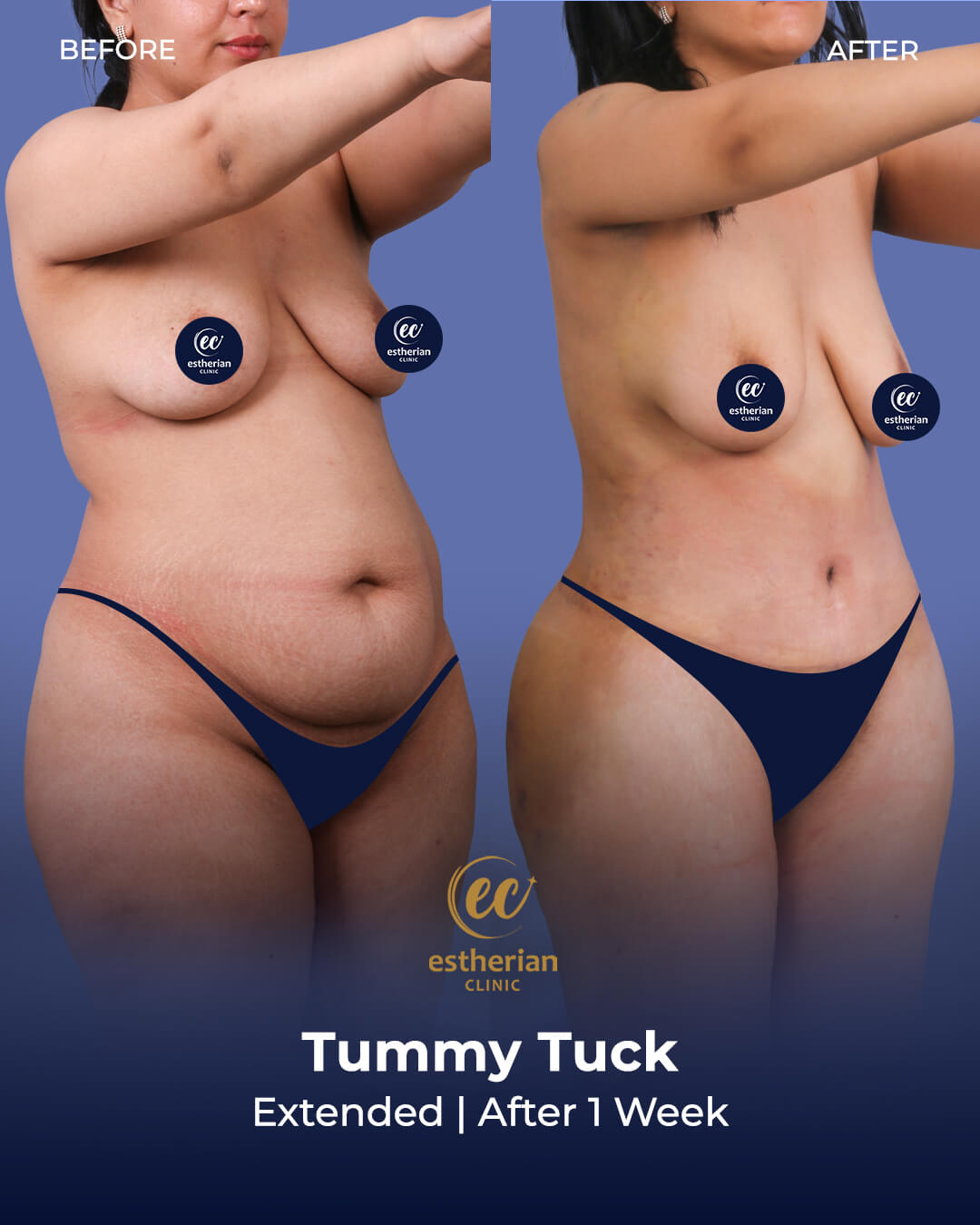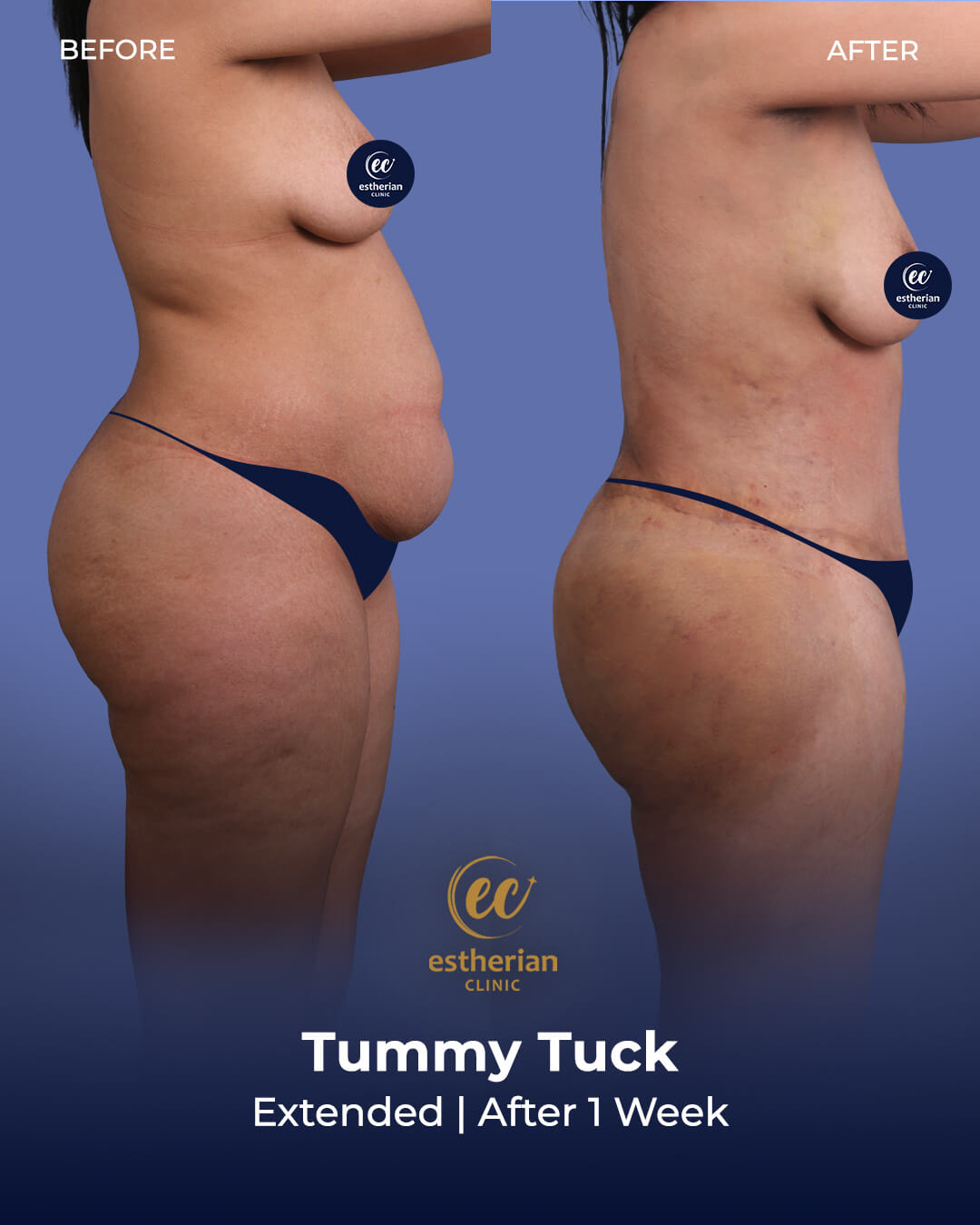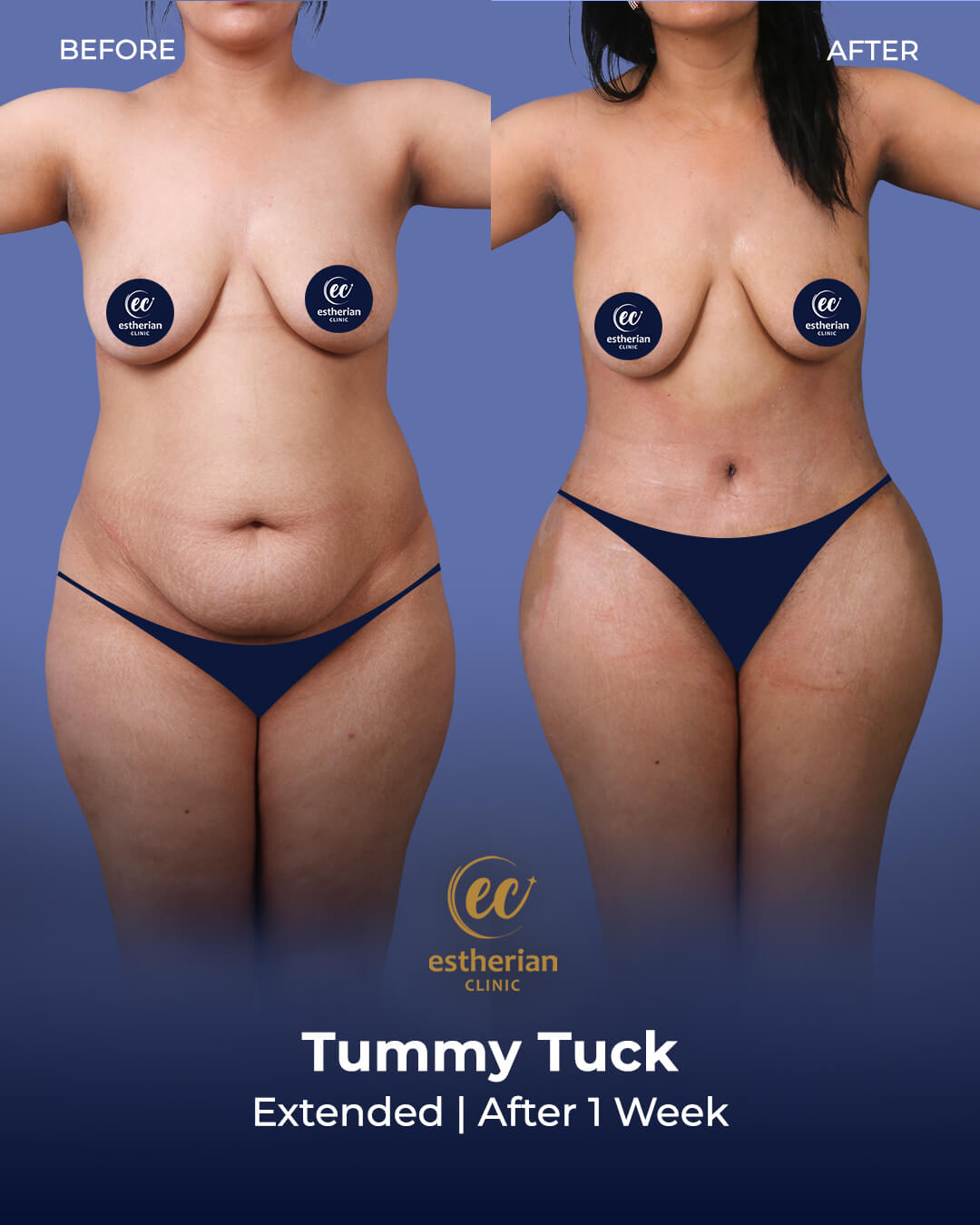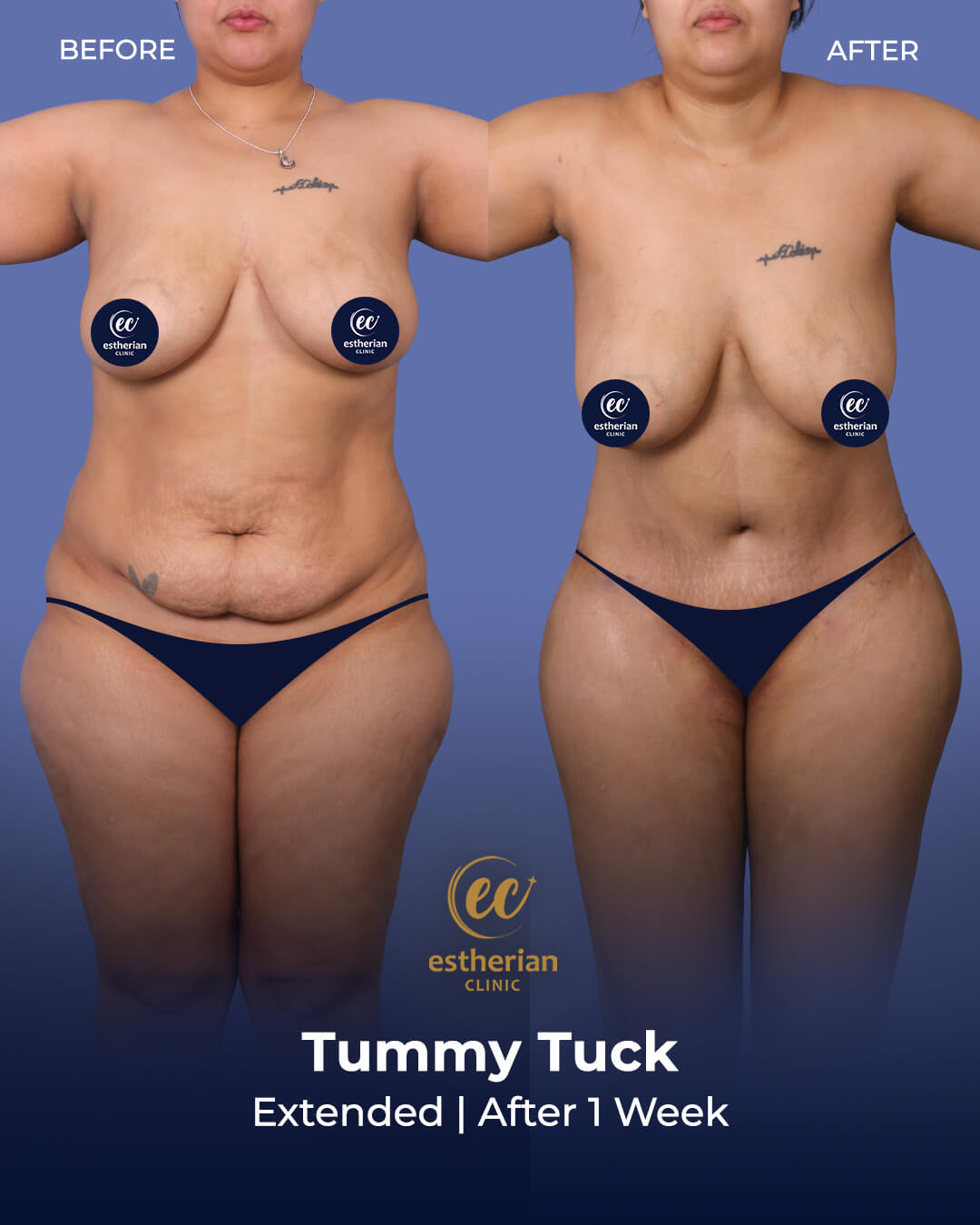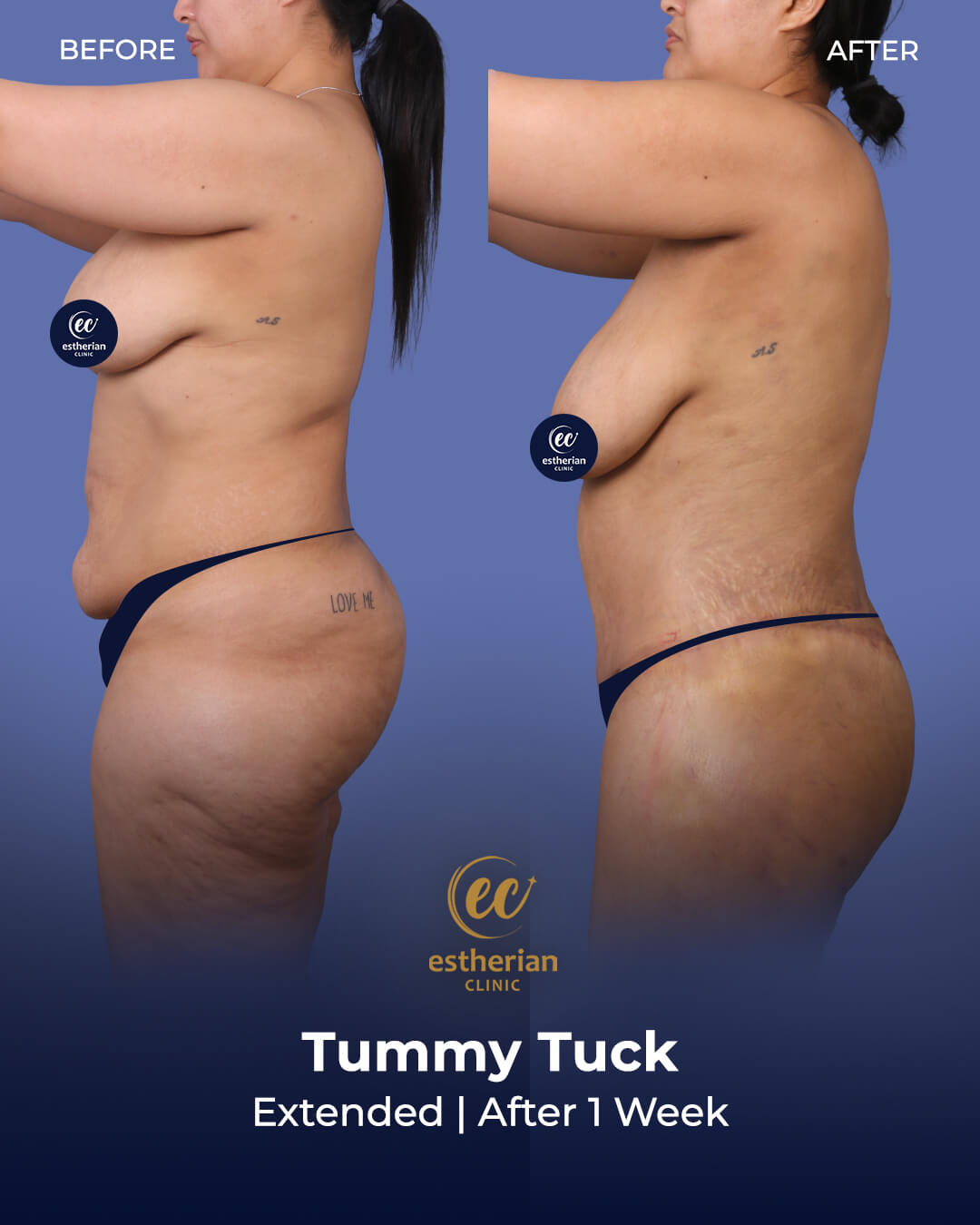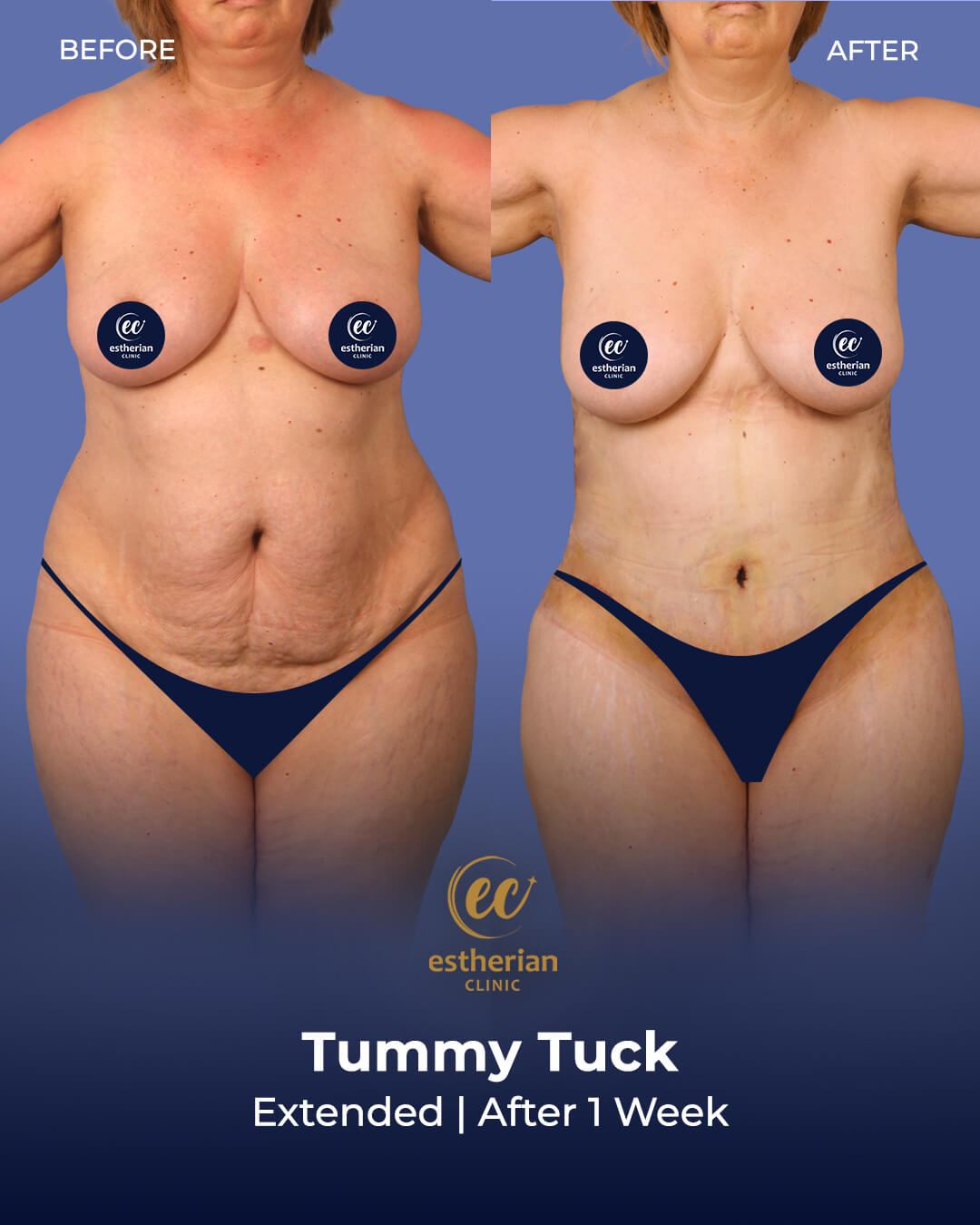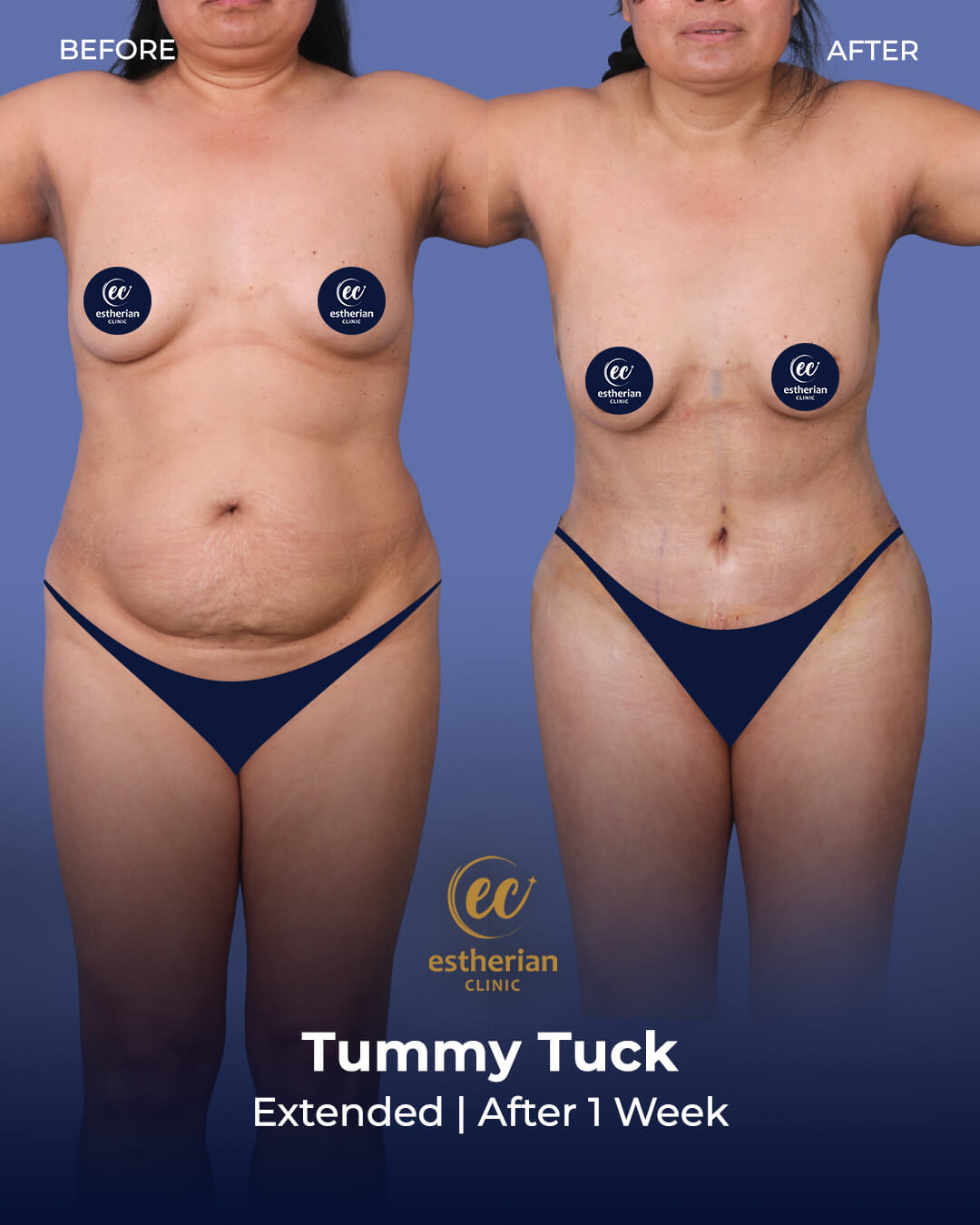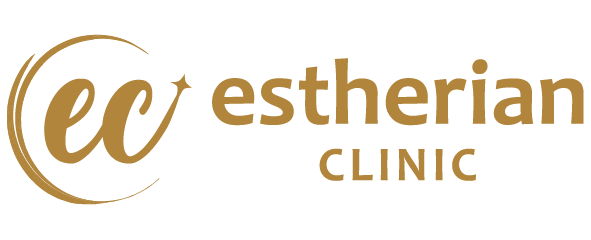A tummy tuck, also known as abdominoplasty, is a cosmetic surgery that removes excess skin and fat from the abdomen while tightening weak abdominal muscles. This procedure is especially popular among people who have experienced major weight loss, pregnancy, or aging, which can all leave behind loose skin and a protruding belly.
In Turkey, tummy tuck surgery is performed with advanced techniques, ensuring safe procedures, natural results, and affordable costs compared to many other countries. With the expertise of Dr. Cengizhan Ekizceli, patients can achieve a firmer, flatter, and more youthful-looking abdomen.
Why the Abdomen Area Matters
The abdomen is often considered the core of the body, both literally and symbolically. It plays a major role in overall body proportions, balance, and posture. A well-defined midsection creates a sense of harmony between the upper and lower body, while a bulging or sagging abdomen can overshadow even the most toned arms or legs.
Beyond aesthetics, the abdominal area is closely tied to how we feel in our clothes and how confident we are in social or professional settings. Many people see the stomach as a reflection of their lifestyle and health. Even small changes in this area are quickly noticeable, which is why individuals often become more self-conscious about their midsection than any other part of their body.
In short, the abdomen matters because it acts as the visual center of the physique. It influences the way the entire body is perceived, affects self-image, and contributes directly to confidence and comfort in daily life.
Factors Affecting the Abdomen
Even though the abdomen is central to body harmony, it is also one of the most vulnerable areas when it comes to change. Several factors can affect the appearance of the stomach, often leading to stubborn fat deposits, sagging skin, or weakened abdominal muscles.
1. Pregnancy
Pregnancy places significant strain on the abdominal muscles and skin. As the uterus expands, the abdominal wall stretches, and after childbirth, it often doesn’t return fully to its pre-pregnancy state. Many women experience diastasis recti (a separation of the abdominal muscles), as well as excess skin and stretch marks.
2. Weight Fluctuations
Rapid weight gain followed by weight loss, or cycles of both, stretches the skin and causes it to lose elasticity over time. Even after achieving a healthy weight, excess skin and stubborn fat pockets often remain in the abdominal region, resisting diet and exercise efforts.
3. Aging
As we age, the levels of natural collagen and elastin in the skin decrease. This leads to looser, less resilient skin that is prone to sagging. Additionally, metabolism slows down, making fat in the abdominal area more persistent.
4. Genetics
Genetic predisposition also plays a role. Some people naturally carry more fat in the midsection, or their skin and muscles are more prone to stretching and laxity. For these individuals, achieving a flat and toned abdomen can be especially difficult without medical intervention.

Techniques of Tummy Tuck (Abdominoplasty)
Not all tummy tucks are the same. The technique your surgeon chooses depends on how much excess skin, fat, and muscle weakness you have. Each method is tailored to address different concerns, ensuring the most natural and balanced result possible.
1. Full Tummy Tuck (Classic Abdominoplasty)
- Best for patients with significant skin laxity, weakened abdominal muscles, or excess fat across the entire abdomen.
- Involves a horizontal incision just above the pubic line, extending between the hip bones.
- The surgeon tightens the abdominal muscles, removes excess skin and fat, and repositions the belly button for a natural look.
- Provides the most dramatic improvement, particularly for women after multiple pregnancies or for those with major weight loss.
2. Mini Tummy Tuck
- Designed for people with loose skin and small fat deposits only in the lower abdomen (below the belly button).
- Requires a shorter incision, usually similar to a C-section scar.
- No belly button repositioning is needed.
- Offers a quicker recovery compared to the full tummy tuck, but the results are more limited.
3. Extended Tummy Tuck
- Used when excess skin and fat extend beyond the abdomen to the flanks (love handles) and sometimes the lower back.
- Involves a longer incision than a full tummy tuck, allowing the surgeon to contour the waistline more effectively.
- Common among patients who have experienced massive weight loss.
4. Fleur-de-Lis Tummy Tuck
- Recommended for patients with large amounts of extra skin both vertically and horizontally (often after bariatric surgery).
- Involves both a vertical and horizontal incision, which allows for maximum removal of excess tissue.
- While it leaves a more visible scar, it delivers dramatic reshaping of the abdomen.
5. Circumferential (Belt Lipectomy)
- Extends around the entire midsection, treating not only the abdomen but also the lower back and buttock areas.
- Ideal for post-bariatric patients with excess skin that wraps around the body.
- Provides the most comprehensive body contouring results, essentially functioning as a lower body lift.
6. High-Tension Abdominoplasty
- A modification of the full tummy tuck that focuses on both skin tightening and muscle repair.
- Allows for a lifted appearance not only in the abdomen but also in the upper thighs and hips.
The Tummy Tuck Procedure
Undergoing a tummy tuck is more than just having surgery: it is a carefully planned process that starts well before the day of operation and extends into the weeks and months after. Each stage is designed to ensure patient safety, maximize results, and promote smooth healing.
Pre-Operative Preparation
The journey begins with a detailed consultation with your surgeon. During this meeting, Dr. Cengizhan Ekizceli will evaluate your abdominal area, discuss your medical history, and listen to your goals. This is the stage where expectations are aligned: whether you need a mini, full, or extended tummy tuck, and whether additional procedures such as liposuction will be combined.
Before surgery, patients are usually advised to:
- Stop smoking at least 4 weeks before and after surgery, as nicotine restricts blood flow and slows healing.
- Avoid blood-thinning medications such as aspirin, certain herbal supplements, and anti-inflammatory drugs, which can increase bleeding risks.
- Maintain a balanced diet, stay well-hydrated, and keep weight stable to ensure the body is in its best condition for healing.
You may also be asked to undergo routine medical tests, such as blood work or an ECG, to ensure you are fit for anaesthesia. Patients often find this stage reassuring, as it confirms that safety comes first.
During the Operation
On the day of surgery, the procedure typically lasts between 2 to 4 hours, depending on the complexity. Most tummy tucks are performed under general anesthesia, ensuring the patient is completely comfortable and unaware during the operation.
Once anesthesia is administered, the surgeon makes carefully placed incisions. In a full tummy tuck, this usually means a horizontal incision just above the pubic area, stretching between the hips, and sometimes a small incision around the belly button. Through these openings, excess fat is removed, weakened abdominal muscles are tightened with sutures, and sagging skin is carefully trimmed away.
If liposuction is combined with the tummy tuck, it is usually performed at this stage to refine the waistline and flanks. The belly button may also be repositioned to sit naturally on the newly contoured abdomen. Once the adjustments are complete, the skin is pulled downward, sutured in layers for strength, and the incisions are closed with fine stitches.
Drains are sometimes placed to prevent fluid accumulation, although newer techniques are increasingly designed to be “drain-free.” Finally, the area is dressed with bandages, and a compression garment is applied to support the new abdominal contour.
Throughout the operation, the surgical team carefully monitors vital signs, heart rate, blood pressure, and oxygen levels to maintain safety at every step.
Post-Operative Recovery
Immediately after surgery, patients are taken to a recovery room where they are closely observed as the anesthesia wears off. It’s normal to feel some tightness and discomfort, but pain is controlled with prescribed medication. Most patients stay in the hospital overnight for monitoring, although some may be discharged the same day depending on their overall health and the extent of surgery.
At home, the first week is focused on rest and gentle mobility. Patients are encouraged to walk around the house as soon as possible to promote circulation and reduce the risk of blood clots. Wearing the compression garment is essential, as it reduces swelling, supports healing tissues, and helps the skin adhere to its new contours.
Swelling and bruising gradually improve over the first two to three weeks. Most people can return to light daily activities within 10–14 days, although heavy lifting and strenuous exercise should be avoided for at least 6 weeks. Follow-up appointments with Dr. Cengizhan Ekizceli ensure the healing process is on track, sutures are checked, and patients can ask questions about their recovery.
The final results of a tummy tuck are not immediately visible. While initial improvements can be seen once swelling decreases, the abdomen continues to refine over the following 3–6 months, ultimately revealing a flatter, firmer, and more sculpted silhouette.
Who is a Good Candidate for Tummy Tuck Surgery?
Not every person who feels dissatisfied with their abdominal area is an ideal candidate for a tummy tuck. The procedure is powerful, but it is also a major operation that requires careful selection and realistic expectations. Generally, the best candidates are individuals who have localized excess skin, stubborn fat deposits, or weakened abdominal muscles that cannot be corrected with diet and exercise alone.
A tummy tuck is not a weight-loss surgery. Instead, it is designed for body contouring and refinement. For this reason, patients who are already close to their healthy weight, typically within 10–15% of their ideal body weight, tend to achieve the most satisfying results. Those who are significantly overweight may be advised to lose weight first before considering abdominoplasty.
Factors That Make Someone a Strong Candidate
- Excess or Loose Abdominal Skin
One of the clearest signs that a tummy tuck may be appropriate is when the skin on the abdomen has stretched and lost its ability to retract naturally. This often occurs after pregnancy, significant weight fluctuations, or simply as part of the aging process. A tummy tuck can remove this extra skin and restore a smooth, firm abdominal wall. - Weakened or Separated Abdominal Muscles (Diastasis Recti)
Many patients, especially women after pregnancy, experience separation of the abdominal muscles. This condition, known as diastasis recti, leads to a protruding belly that cannot be corrected with exercise alone. A tummy tuck allows the surgeon to stitch these muscles back together, strengthening the core and improving posture in the process. - Good General Health
Since abdominoplasty is performed under general anesthesia and involves significant tissue manipulation, patients should be in good physical health. Chronic conditions such as uncontrolled diabetes, heart disease, or blood-clotting disorders may increase risks and need to be discussed openly with the surgeon. - Non-Smokers or Those Willing to Quit
Smoking significantly compromises blood circulation, which can slow healing and increase the risk of complications such as wound breakdown. Ideal candidates are non-smokers or are willing to quit smoking at least 4 weeks before and after surgery. - Stable Weight
Fluctuating weight after surgery can compromise the results. Patients who have reached a stable weight and do not plan to undergo major weight changes are the best candidates. Women who plan future pregnancies are often advised to postpone the procedure, as pregnancy can stretch the abdominal wall again. - Realistic Expectations
A tummy tuck can deliver dramatic improvements, but it cannot deliver perfection. Good candidates understand that while their abdomen will look flatter and more toned, there will also be a surgical scar, usually hidden along the bikini line. Having a balanced mindset is key to long-term satisfaction.
Psychological Readiness
A tummy tuck does not just transform the body — it also affects self-image. Patients who are emotionally ready for the changes and understand both the benefits and limitations of the surgery tend to be the happiest with their results. Some patients report that the procedure helps them feel more confident in their clothing, improves motivation to maintain a healthy lifestyle, and boosts overall quality of life.
Candidates to Reconsider or Delay Surgery
There are situations where a tummy tuck may not be appropriate at the moment:
- Individuals with uncontrolled medical conditions that pose anesthesia risks.
- Patients planning a pregnancy in the near future.
- Those with unrealistic expectations, hoping for dramatic weight loss from the surgery itself.
- Patients are unwilling to commit to recovery guidelines, such as wearing a compression garment or avoiding strenuous activity for several weeks.
By carefully assessing these factors, Dr. Cengizhan Ekizceli ensures that only suitable candidates move forward with the procedure, maximising safety and long-term success.
Benefits of Tummy Tuck Surgery
A tummy tuck is often seen as a cosmetic procedure, but its advantages go far beyond appearance alone. For many patients, it delivers a transformative blend of aesthetic enhancement, functional improvement, and psychological relief.
1.
Flatter, Firmer Abdomen
The most immediate and visible benefit is a smoother, tighter abdominal profile. By removing excess skin and fat while tightening the underlying muscles, abdominoplasty restores a toned midsection that diet and exercise alone often cannot achieve.
2.
Improved Core Strength and Stability
When abdominal muscles are weakened or separated, the core loses stability. This can lead to lower back pain, poor posture, and difficulty with certain physical activities. Repairing these muscles during a tummy tuck strengthens the core, improves spinal support, and enhances balance. Many patients find that everyday movements, from lifting groceries to exercising, become easier after recovery.
3.
Reduction of Stretch Marks
While a tummy tuck is not designed specifically to treat stretch marks, many of them are located in the lower abdomen, the area often removed during the procedure. As a result, patients may notice a significant reduction in visible stretch marks below the navel.
4.
Better Fit for Clothing
Loose, hanging skin can make clothing fit awkwardly or uncomfortably. After a tummy tuck, many patients find it easier to wear fitted clothes and feel confident in swimsuits, dresses, and athletic wear.
5.
Motivation for a Healthy Lifestyle
Patients frequently report that their improved abdominal contour motivates them to maintain their results through consistent diet and exercise. For many, the surgery is a turning point that inspires healthier long-term habits.
6.
Improved Posture and Relief from Back Pain
Weakened abdominal muscles contribute to a condition called lordosis (swayback), where the spine curves excessively. By tightening these muscles, a tummy tuck helps improve alignment, which may reduce chronic back discomfort.
7.
Correction of Diastasis Recti
This common condition, especially after pregnancy, causes the abdominal muscles to spread apart, leaving a persistent bulge. Surgical repair during a tummy tuck not only restores appearance but also corrects the underlying anatomical issue.
8.
Enhanced Confidence and Body Image
Perhaps the most powerful benefit is psychological. Many patients experience a significant boost in confidence and self-esteem, especially when wearing clothes that previously made them feel self-conscious. The procedure can help individuals feel more aligned with their body goals, leading to an improved quality of life.
9.
Long-Lasting Results
With proper care and a stable weight, the results of a tummy tuck can last for many years. Unlike temporary cosmetic treatments, the improvements are long-term, especially when patients commit to maintaining a healthy lifestyle.
What Are The Risks Of Tummy Tuck Surgery?
Like all surgical procedures, a tummy tuck carries certain risks. While complications are relatively uncommon when performed by a qualified surgeon, patients need to understand the potential issues and how they can be managed.
1.
General Surgical Risks
- Bleeding: Although rare, excessive bleeding can occur during or after surgery. Surgeons take precautions to minimize this risk, and patients are advised to avoid blood-thinning medications before the procedure.
- Infection: As with any surgery, infection is possible. This is usually prevented with antibiotics and proper wound care.
- Adverse Reactions to Anesthesia: Some individuals may react negatively to anesthesia, though anesthesiologists carefully monitor patients to reduce these risks.
2.
Scarring
A tummy tuck requires a horizontal incision, typically placed low on the abdomen where it can be hidden beneath underwear or swimwear. While scars usually fade over time, they are permanent. Proper scar care and following post-op instructions can help them heal discreetly.
3.
Seroma (Fluid Accumulation)
One of the more common complications is fluid buildup under the skin. Surgeons may place temporary drains and advise patients on how to reduce swelling and prevent fluid retention.
4.
Delayed Wound Healing
Some patients, particularly smokers or those with certain health conditions, may experience slower healing. This can increase the chance of wound separation or infection, which is why following pre- and post-surgical care instructions is critical.
5.
Changes in Sensation
It is common to experience numbness, tingling, or reduced skin sensitivity around the incision site and lower abdomen. In most cases, these sensations improve within months, but in rare cases they may persist.
6.
Asymmetry or Irregular Contours
Swelling during recovery can temporarily affect symmetry, but in rare cases, unevenness may persist and require revision surgery. Choosing an experienced surgeon reduces this risk significantly.
7.
Blood Clots
Deep vein thrombosis (DVT) or pulmonary embolism (PE) is a rare but serious risk. Surgeons minimize this by encouraging early movement after surgery and, when necessary, prescribing preventive medications.
8.
Skin Necrosis (Tissue Death)
If the blood supply to the skin is compromised, a small area of tissue may not heal properly. This is rare but more likely in smokers or patients with circulation problems.
9.
Unsatisfactory Aesthetic Results
While most patients are highly satisfied, results may not always match expectations. Open and honest communication during consultation helps set realistic goals and minimises this risk.
A tummy tuck is generally considered safe when performed by an experienced plastic surgeon in a proper medical facility. Understanding the risks allows patients to make informed decisions and prepares them to follow all medical advice to reduce complications.
Frequently Asked Questions (FAQs) About Tummy Tuck Surgery In Turkey
Is A Tummy Tuck A Weight-loss Procedure?
No, a tummy tuck is not a weight-loss surgery. It is best suited for individuals who are at or near their ideal weight but struggle with excess skin or abdominal laxity that cannot be corrected through diet and exercise.
Are The Results Of A Tummy Tuck Permanent?
The results are long-lasting if you maintain a stable weight and a healthy lifestyle. However, significant weight fluctuations or future pregnancies can affect the outcome.
Can I Combine A Tummy Tuck With Other Procedures?
Yes, many patients combine a tummy tuck with other procedures, such as liposuction, breast augmentation, or a mommy makeover, for more comprehensive body contouring results.
Tummy Tuck Surgery In Turkey Before And After
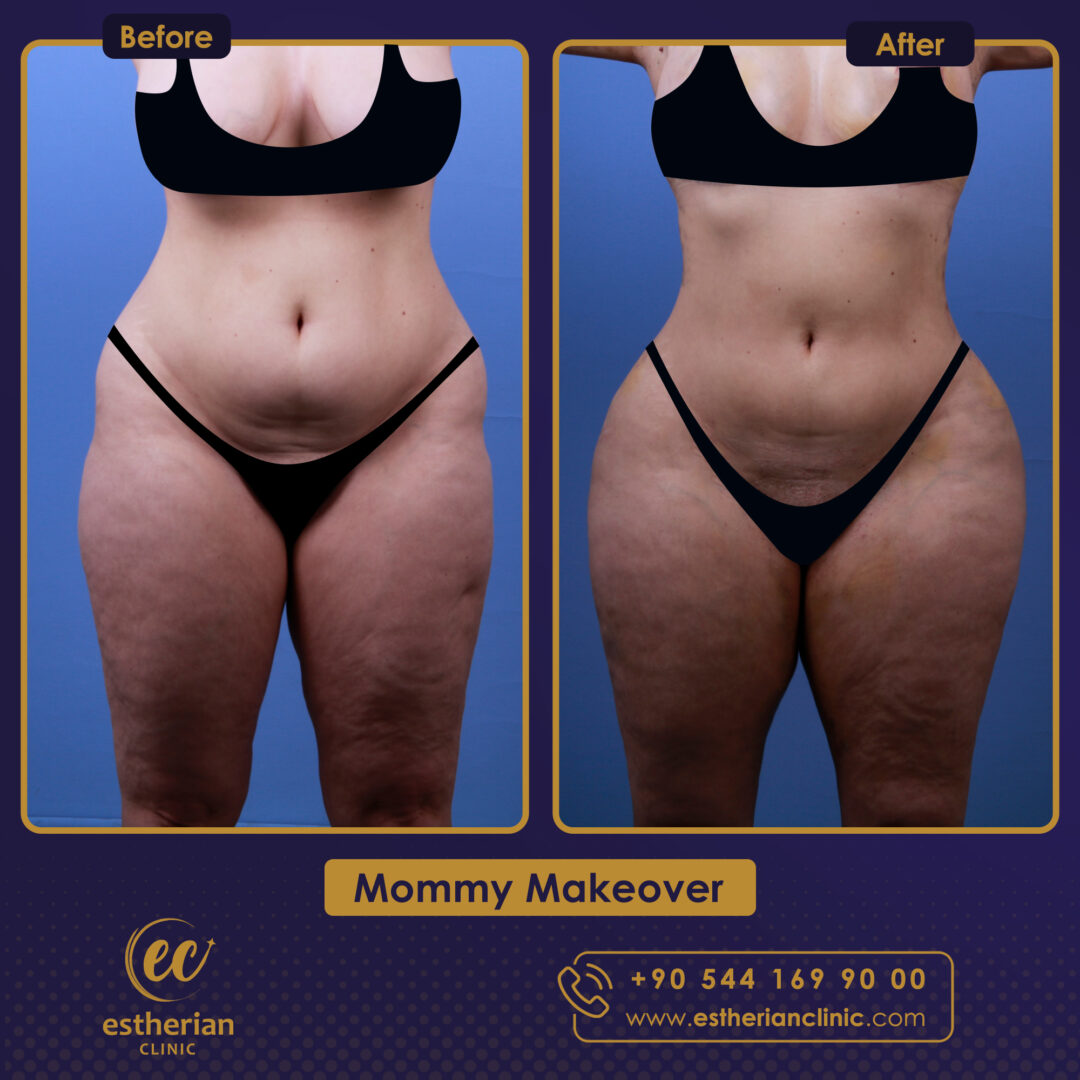
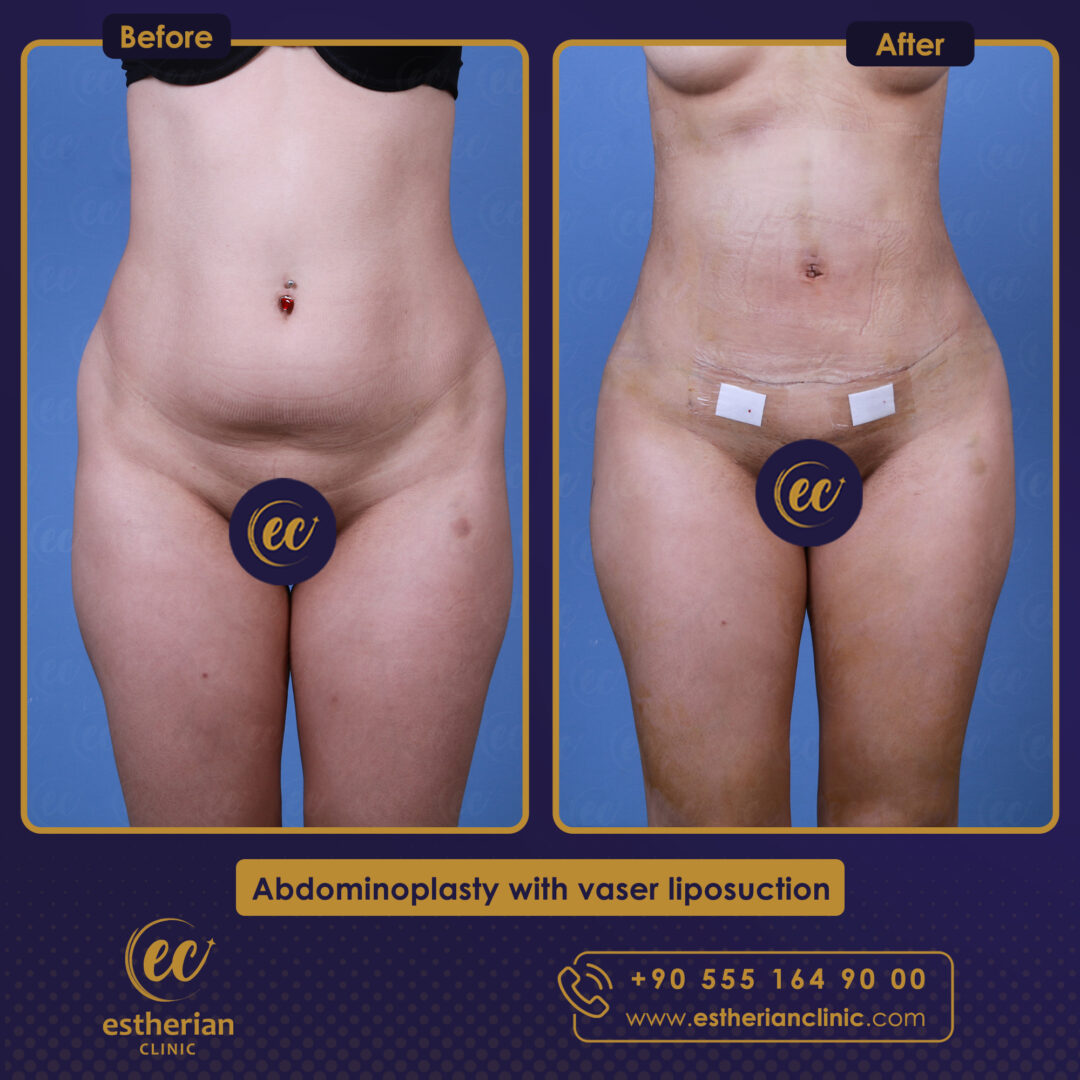
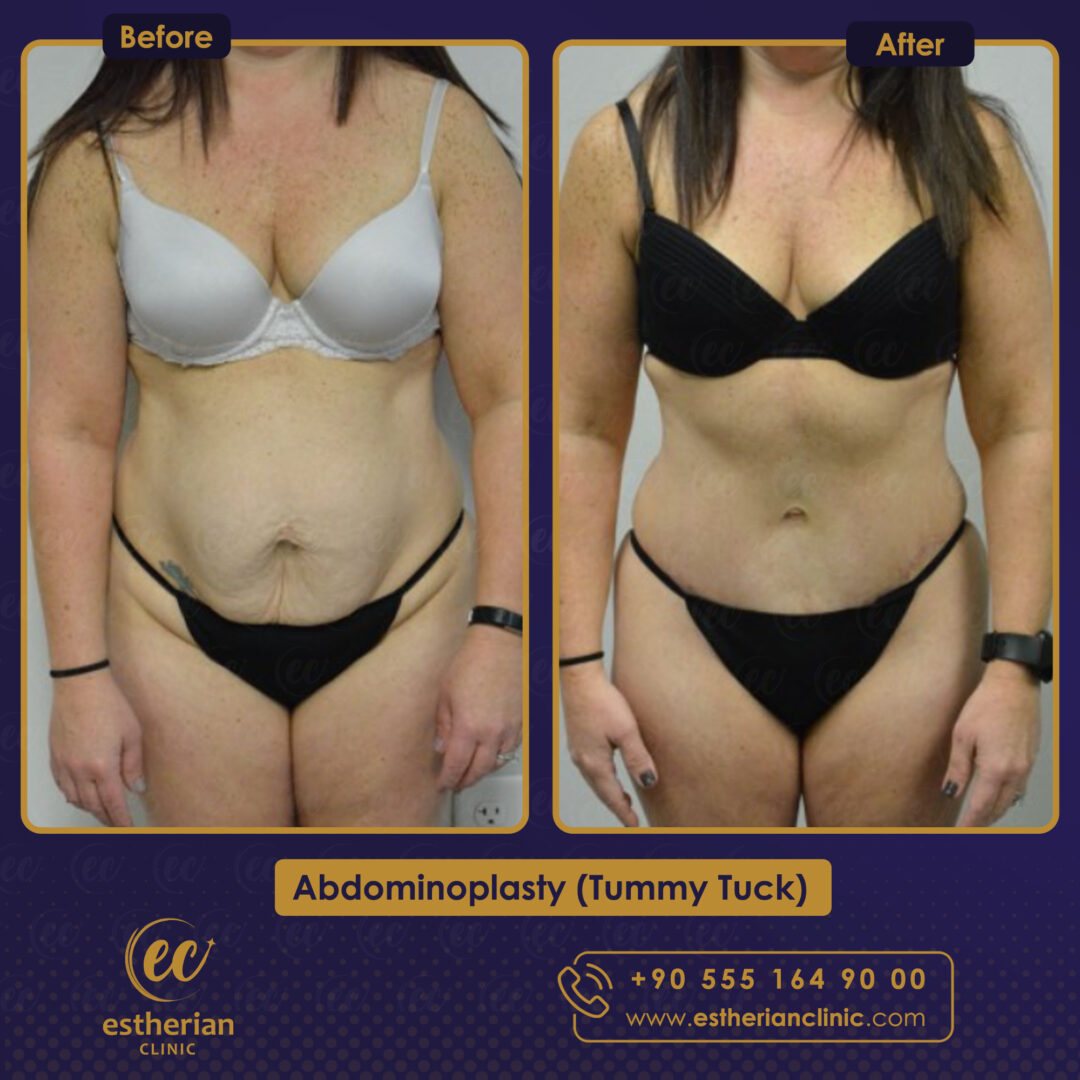
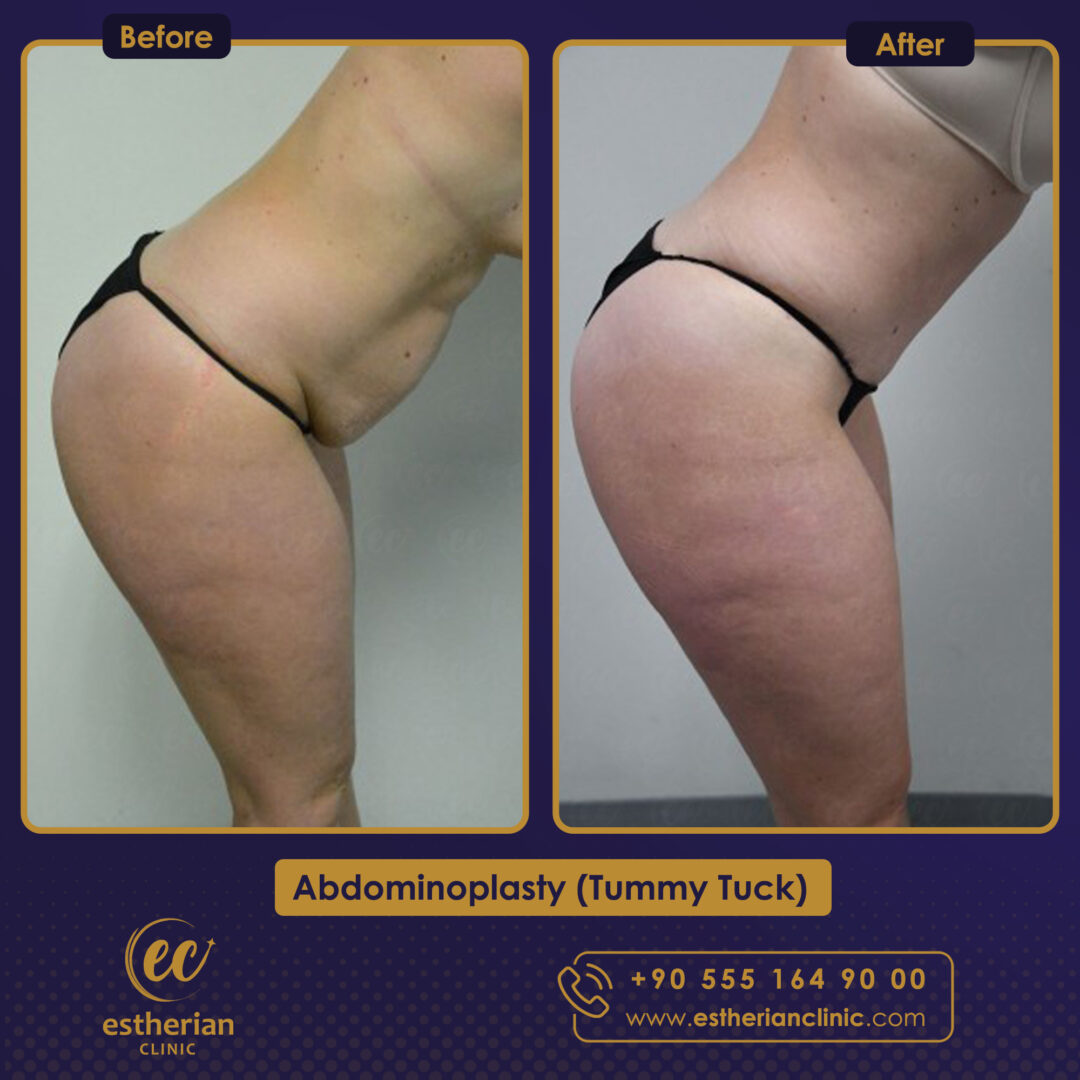
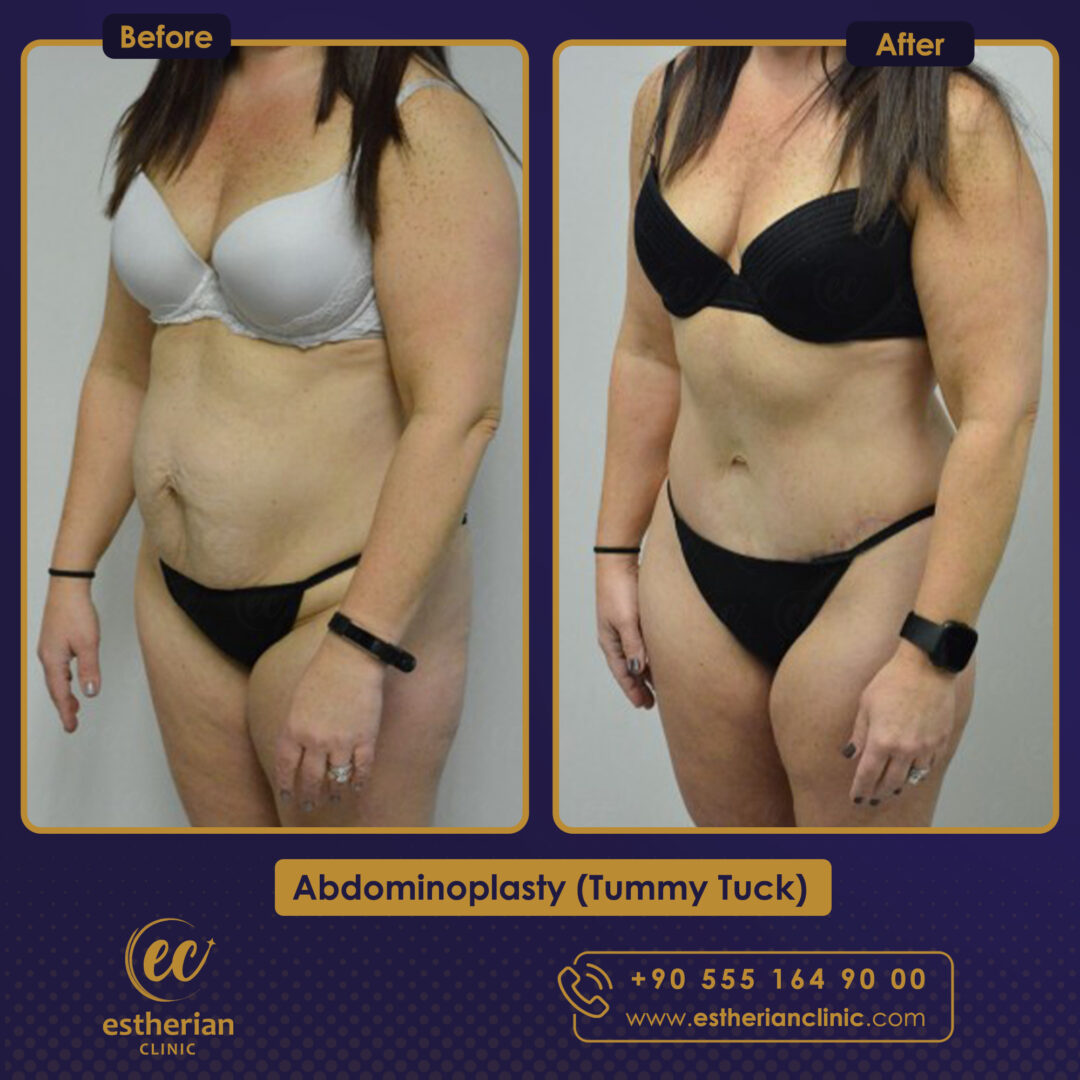
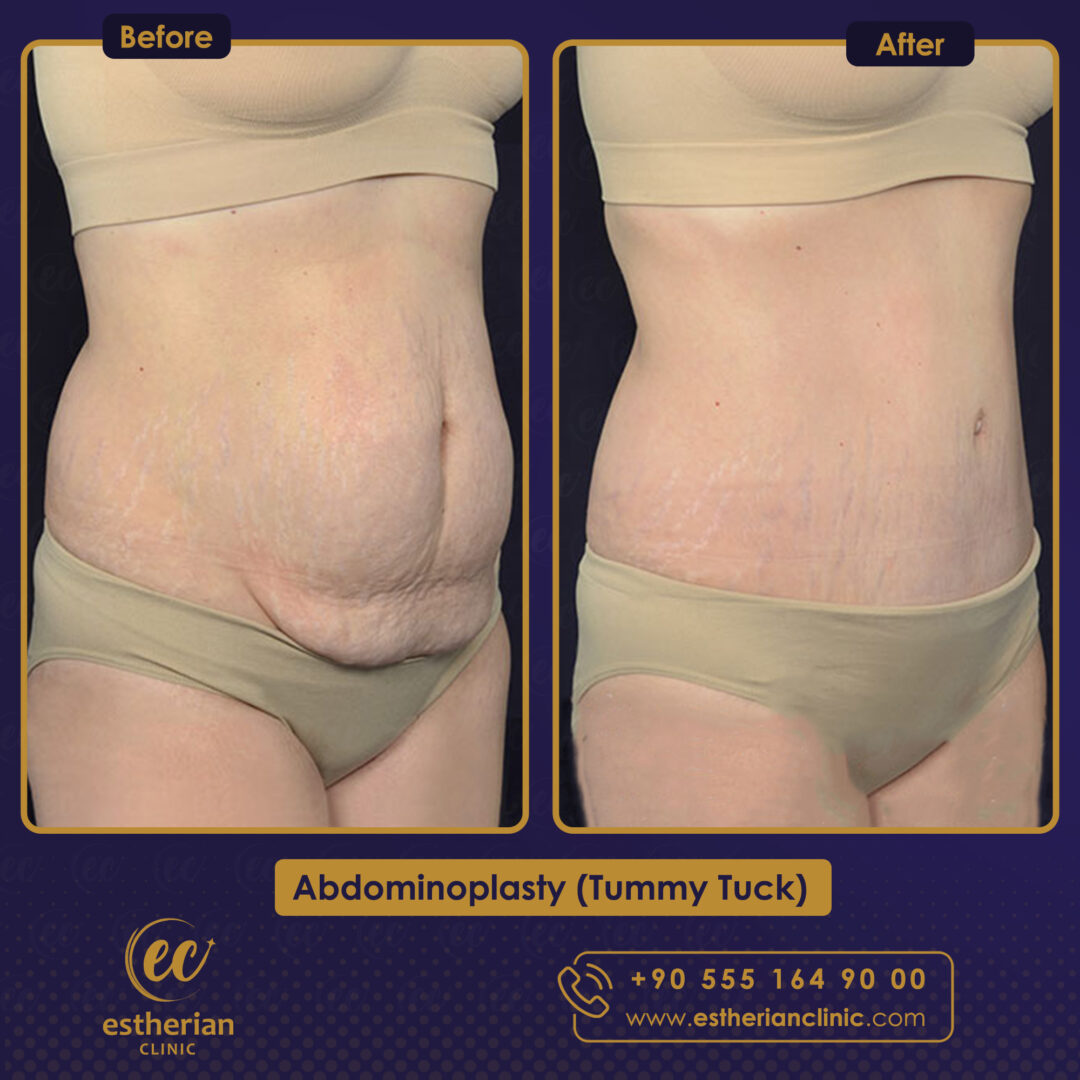
Related Articles About Tummy Tuck Surgery
plasticsurgery.org: “By tightening weakened or separated abdominal muscles, a tummy tuck enhances core strength, leading to better posture and reduced back pain.”
Tummy Tuck Success Stories & Results
